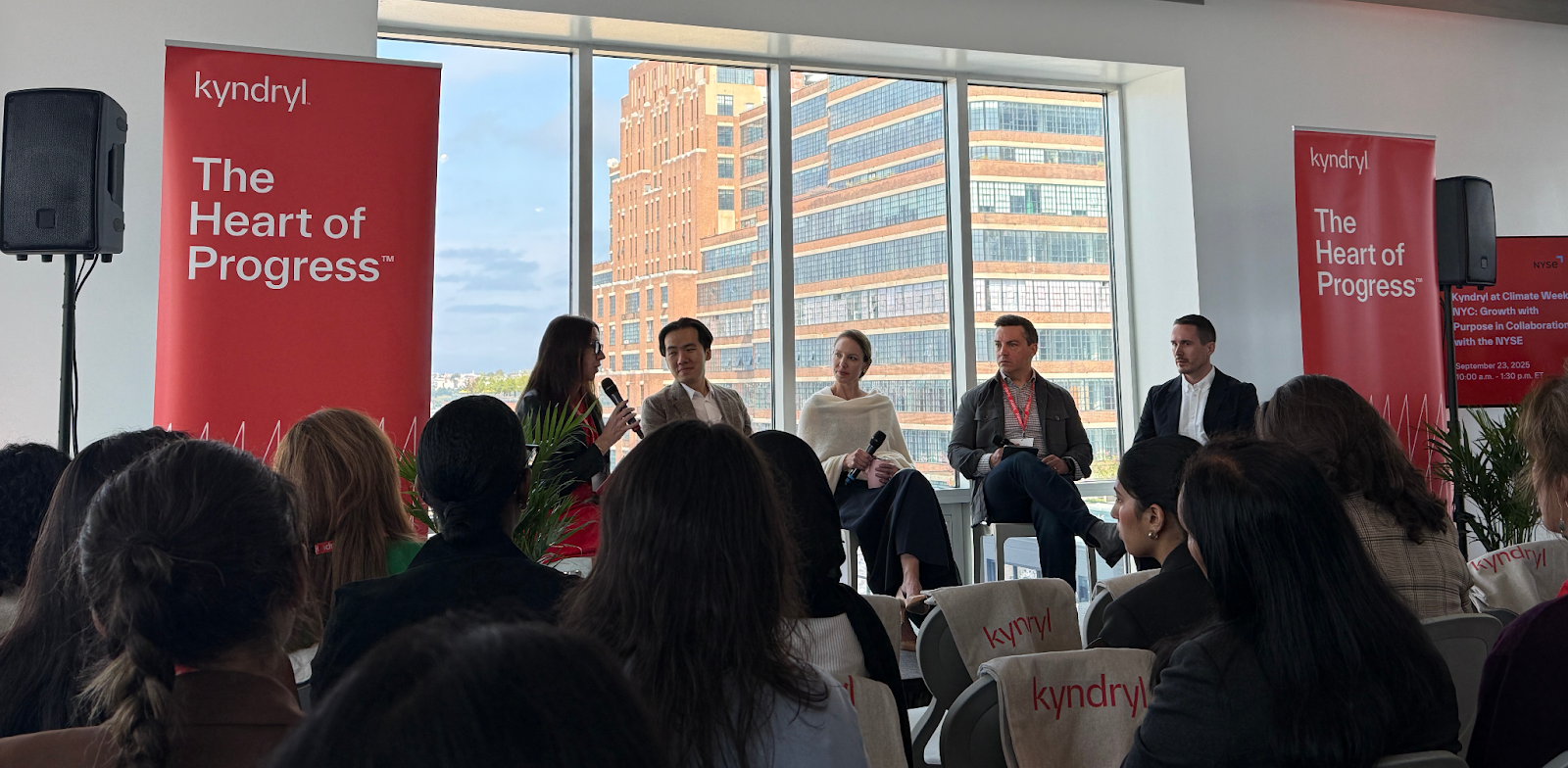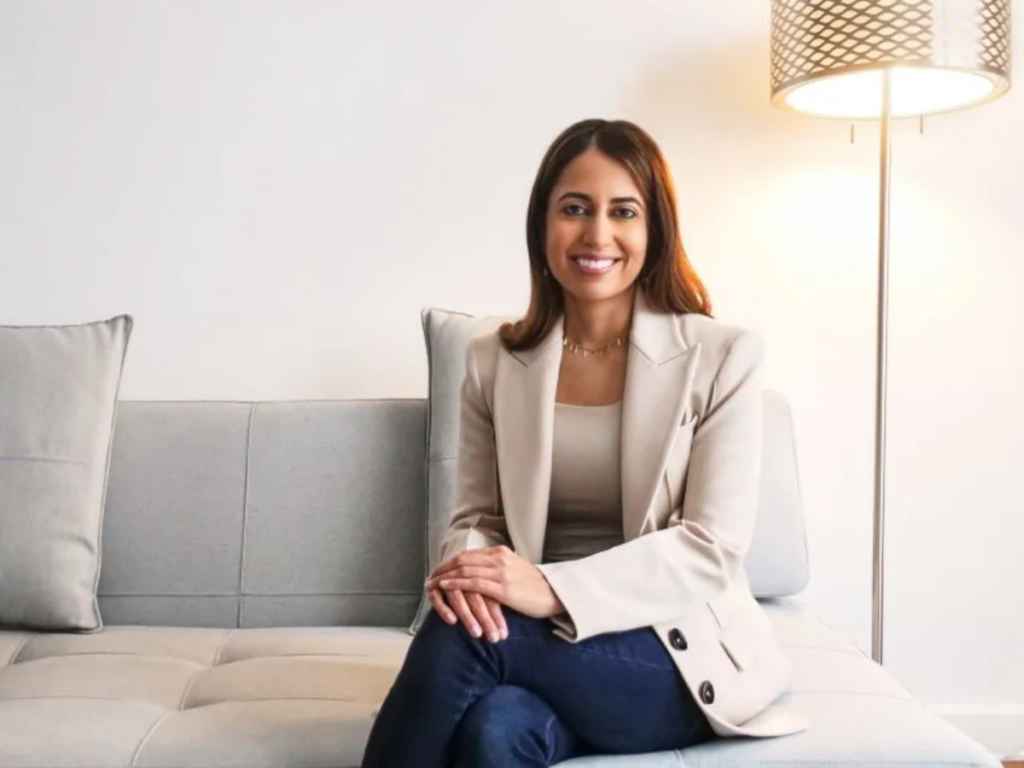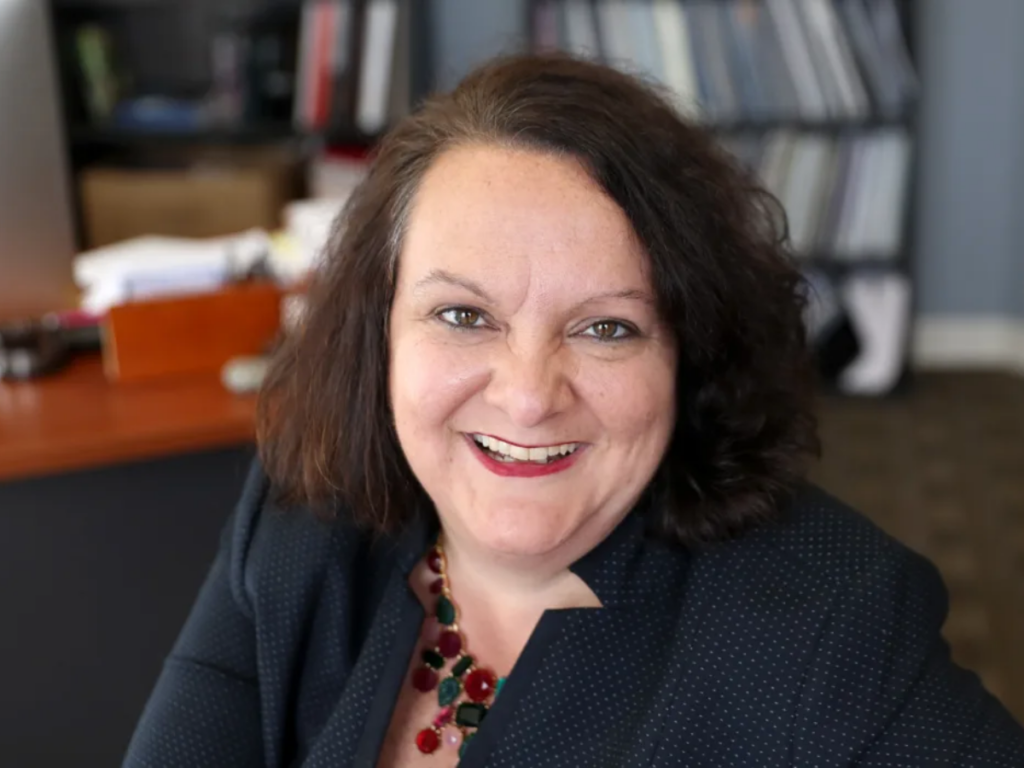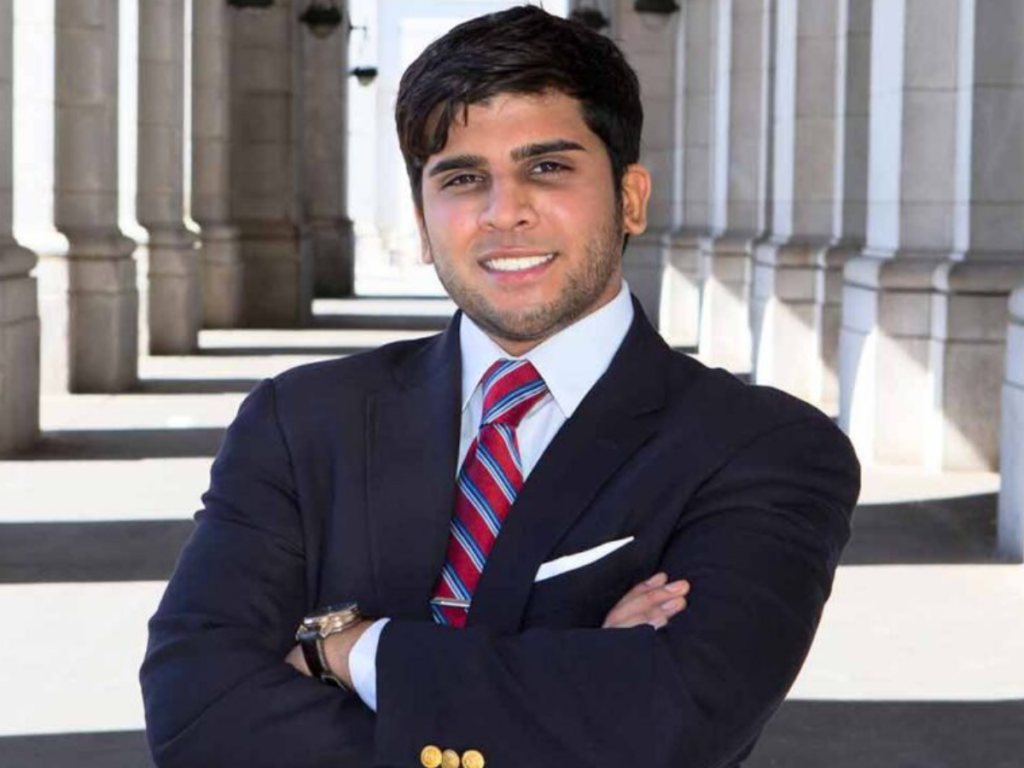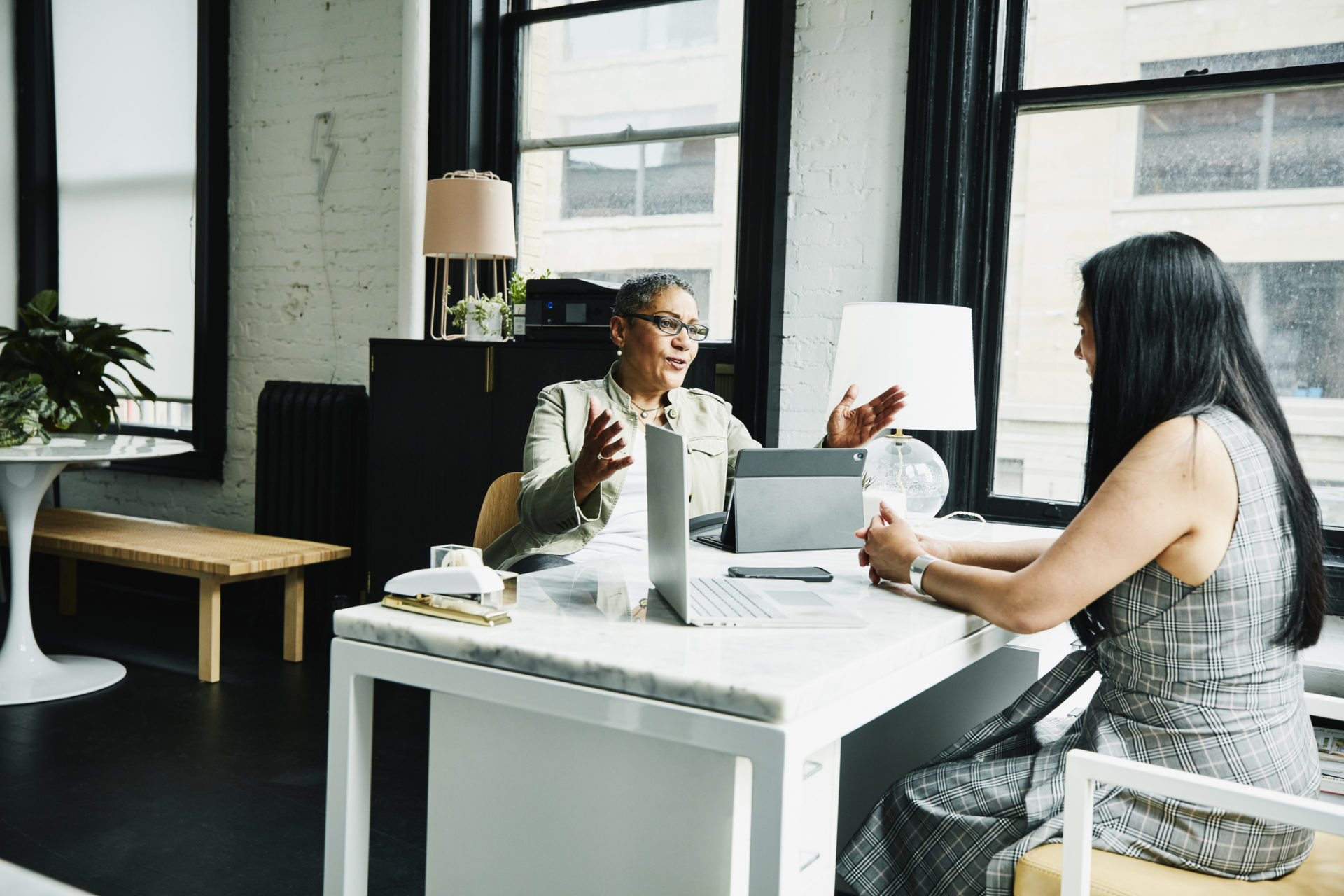At a time when technology is reshaping the workforce and climate pressures are redefining business, leaders are grappling with a central question: how do we equip organizations — and the people within them — not just to keep pace, but to thrive? During Climate Week, Kyndryl convened an event called “Growth with Purpose” that featured two dynamic panels focused on tackling that challenge from different but deeply connected angles.
The first panel, Skilling for a Secure Digital Future, examined how AI is transforming the very notion of being “future ready.” Panelists stressed that technical expertise alone will not suffice; adaptability, resilience, and human-centered skills remain just as critical. They spoke candidly about the paradox of AI adoption: the technology’s potential to unlock massive productivity gains is real, but its impact depends as much on mindset, culture, and trust as on tools themselves.
The second panel, Risk, Readiness, and Reporting in Sustainability Work, turned the focus to how businesses prepare for an uncertain climate future. Executives from finance, technology, and infrastructure underscored the growing importance of supply-chain resilience, the integration of sustainability into financial decision-making, and the role of trust and transparency in meeting investor and community expectations. As externalities like carbon and natural capital become priced into markets, sustainability is moving from a regulatory obligation to a driver of business value.
Together, the discussions revealed a common imperative: whether navigating the rise of AI or the realities of climate risk, organizations must balance innovation with intentionality. The future may be uncertain, but readiness, resilience, and principled action will be the measures of who thrives.
Panel 1: Skilling for a Digital Future
- Being “future ready” means building systems of continuous learning. Panelists agreed that the future of work is not a fixed destination. Instead, it requires organizations and individuals to build habits of constant iteration and adaptation. One speaker even suggested professionals should aim to “make 20% of their jobs obsolete each year,” eliminating low-value tasks to create space for higher-value innovation and growth.
- The biggest barriers to AI adoption are cultural, not technical. While AI’s potential is vast, many organizations struggle with implementation because of fear, discomfort, or uncertainty. Leaders stressed the need to normalize experimentation and failure as part of learning. Generational divides also surfaced: senior employees often use AI more effectively because of their experience and judgment, while younger hires may be more fluent with tools but lack context. Bridging these divides will be essential.
- Workers need more transparency about which credentials actually pay off. Although 40% of U.S. adults have some college but no degree, only 12.5% of credential programs deliver meaningful wage gains. More transparency is needed so workers know which credentials are actually valuable. Panelists argued for clearer data and guidance so workers understand which pathways provide real mobility, and which don’t deliver on their promise. The same logic applies to skills: For example, Kyndryl is prioritizing mapping current vs. future skills and making that data transparent to employees — helping them visualize where the business is headed and how they can grow.
- Human-centered skills will only grow in value. As technical skills shift rapidly with technological change, human skills — such as empathy, trust-building, problem-solving, and communication — are emerging as the most durable advantage. Panelists suggested reframing these as “higher-order thinking” skills, a label that better conveys their central importance in AI-enabled workplaces.
- Intentional AI use is the key to maintaining critical thinking. Overreliance on AI risks weakening workers’ ability to write, think critically, and craft narratives. Panelists encouraged organizations to set intentional guidelines: use AI as an accelerator, but not as a replacement for human judgment and expression. The financial incentives also matter: Skepticism about providers pushing AI use for profit is warranted, and workers and companies alike need to set their own intentional frameworks for adoption.
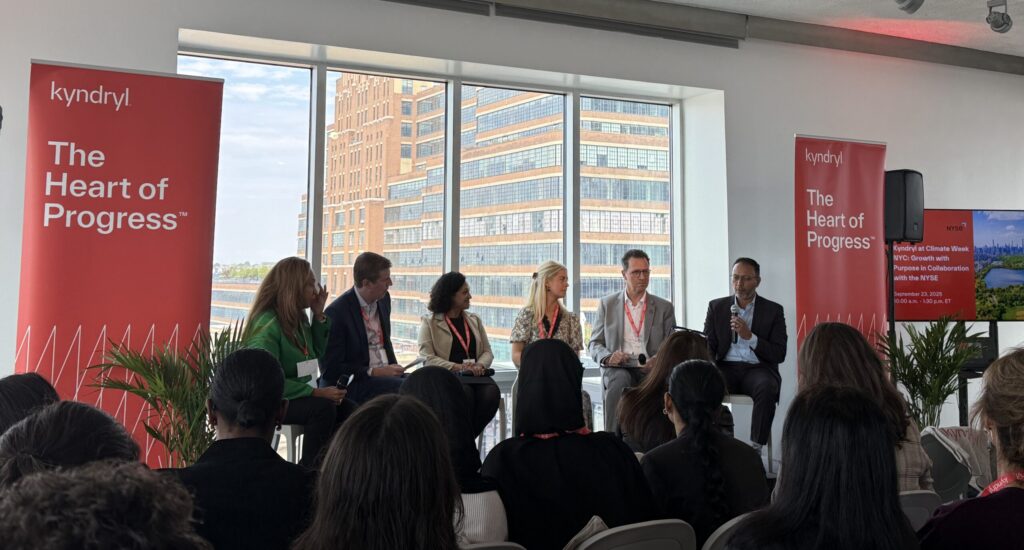
Panel 2: Risk, Readiness, and Reporting in Sustainability Work
- Uncertainty is inevitable, but principles must guide the response. Speakers emphasized that uncertainty has always been part of business, but climate change and resource scarcity magnify it. To remain resilient, companies are establishing clear principles — such as cutting emissions or increasing recycled content in supply chains — that remain non-negotiable, even as circumstances shift.
- Embedding sustainability into the core business is no longer optional. Panelists described how sustainability leaders now work directly alongside CFOs and finance teams, reflecting the growing importance of environmental and social considerations to business value. Carbon pricing, regulatory frameworks, and investor demands are pushing companies to treat sustainability as central to strategy, not a side function.
- Climate risk also creates business opportunities. Disruptions like floods, fires, or supply-chain breakdowns pose real threats, but they also spur demand for new services — from resilient infrastructure to risk management products. Companies that innovate around these needs can turn risk into opportunity.
- Collaboration across the value chain is essential. No company can meet sustainability goals alone. Panelists highlighted the importance of embedding expectations across suppliers, engaging directly with high-emissions vendors, and even spurring innovation through competitions. They also stressed that collaboration must extend beyond the value chain — to startups, academia, industry groups, and policymakers.
- Transparency builds trust with investors and communities. Trust emerged as a critical currency. Transparent reporting on emissions, risks, and progress not only satisfies regulators but also strengthens investor confidence and community credibility. As investors increasingly scrutinize how companies manage both transition risks (like shifting to renewables) and physical risks (like fires or floods), disclosure and accountability become differentiators.
- AI is already helping sustainability efforts, but it must be paired with governance. From using drones to inspect infrastructure to crunching massive emissions datasets, AI is already proving valuable in sustainability work. Yet panelists stressed that AI must be deployed “secure by default,” with robust cybersecurity and governance in place. While the technology can handle scale and speed, empathy, trust, and human judgment remain irreplaceable for advancing sustainability goals.

